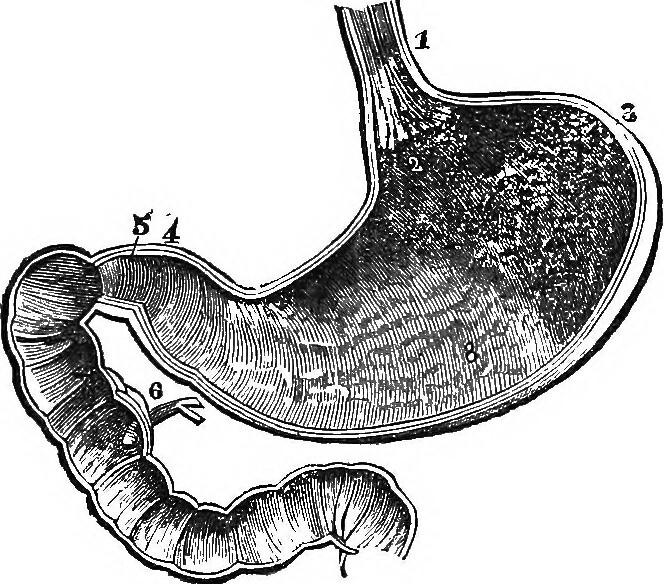- It is J shaped hollow organs lying in the abdomen under the diaphragm. It is continuous at the cardiac sphincter and with the duodenum at the pyloric sphincter.
- The stomach is divided into three region the fundus, body and antrum. When the stomach is inactive the pyloric sphincter is relaxed and opened and when the stomach contain food the sphincter are closed.
- The stomach has 2 curvature the lasser curvature is short and lies on the posterior surface of the stomach. The greater curvature is long and towards the pyloric sphincter.
- The stomach consists of three layer of smooth muscle fibres they are outer layer of longitudinal fibres and middle layer of circular fibres and inner layer of oblique fibres.
- The innermost part of the stomach is is relatively thick and consists of numerous fold called Rugae. Rugae contain a very large number of tubular glands which secret the gastric juice.

Gastric juice:
There is always a small quantity of gastric juice present in the stomach even when it contains no food this is known as fasting juice. Secretion reaches maximum level about 1 litre after meal.
There are three phases of secretion of gastric juice they are:
- Cephalic phase: This flow of juice occurs before food rich the stomach and due to reflex stimulation of the vagus nerve initiated by smell, sight and taste of food.
- Gastric phase: The further secretion of gastric Juice take place after the entry of food into the stomach due to the stimulation and activation of gastric hormone.
- Intestinal phase: when the food enters the duodenum further secretion of gastric juice is stopped this is known as intestinal phase. Cholecystokinin and secretion produced by the endocrine cell of the intestinal mucosa slow down the secretion of gastric juice.
Composition of gastric juice: about 2 litre of gastric juice is secreted daily and consists:
- water and mineral salt
- Hydrochloric acid and intrinsic factor
- Mucus and inactive enzyme precursor such as pepsinogen.
Function of gastric juice:
- The enzyme like pepsin and Hydrochloric acid present in gastric juice pepsin the digestion of proteins into peptones and proteases.
- Hydrochloric acid acidifiers the food stop the action of salivary amylase and kill the ingested microbes.
- Rennin present in the gastric juice acts on the milk protein caseinogen and converted into casein which is then digested by pepsin.
- The intrinsic factor present in the gastric juice helps in the absorption of Vit B12.
Function of stomach:
- Mechanical function: It acts as a reservoir food and mixing of food within the digestive juice. It also help to liquefies and prepels the food further into duodenum.
- It secreted gastric juice which converted food into chyme and helps in digestion .
- Water, alcohol, glucose and certain drugs are observed from the wall of stomach. The intrinsic factor present in the digestive juice help in the absorption of vitamin B12.
- Chemical digestion: The enzyme like pepsin and hydrochloric acid present in gastric juice help in the digestion of protein into peptones and proteases.
- It helps in the excretion of some toxins and drugs.
